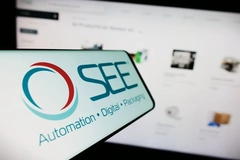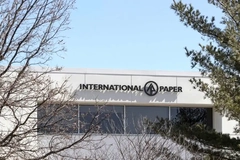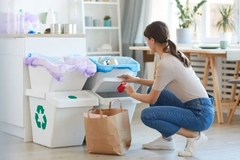“Storytelling and values at the core”: Avery Dennison reveals Make a Mark premium packaging ethos
10 Oct 2023 --- Immersive storytelling through luxury packaging design is a strong emerging theme in the industry, according to Vladimir Tyulpin, Avery Dennison’s market segment leader for Premium Packaging Solutions. “Packaging is no longer just about the packaging — it becomes a storytelling tool for the brand and part of an unforgettable and beautiful experience,” he says.
We explore the evolving landscape of luxury packaging with Tyulpin, as exemplified by the 20 innovative designs unveiled by the Make a Mark project. The project, initiated by industry leaders Estal, Avery Dennison and Kurz, challenges global packaging designers to explore environmentally sustainable luxury packaging concepts without budget constraints.
This year’s edition, the third since its inception, focused on the Wines and Spirits, Beauty and Fragrance and Gourmet Food sectors. Designers were encouraged to push creative boundaries, and the resulting prototypes were crafted using glass from Estal, labeling materials from Avery Dennison and printing tools from the Kurz Group.
Tyulpin highlights a pivotal transformation in the premium packaging industry’s values, shaped by the preferences of a new generation of consumers: “The challenge for luxury brands is that a new generation has increasingly divergent value systems from previous generations of consumers.”
“To attract and keep them engaged, luxury brands are rapidly having to move beyond the traditional notions of luxury — such as status, legacy, prestige and heritage — toward a new set of values: inclusivity, sustainability, transparency, technology, and circular innovation.”
The Make a Mark design projects vividly embody this shift in ethos, according to Tyulpin. “Each of the 20 designs from some of the world’s top packaging designers put storytelling and values at their core, showing us that luxury, when reimagined, is about experience, not excess,” he explains.
How can designers balance the desire for sustainable packaging with exclusivity and indulgence? Nogashi packaging concept from Mazarine Pascalie Design.Tyulpin: While exclusivity and customization are still distinctive traits of the luxury industry, we are shifting from opulence and excess to a desire for rare experiences.
Nogashi packaging concept from Mazarine Pascalie Design.Tyulpin: While exclusivity and customization are still distinctive traits of the luxury industry, we are shifting from opulence and excess to a desire for rare experiences.
The design studio Lavernia & Cienfuegos from Spain created Edit (036), which combines industrial techniques with artisanal processes in a unique customizable fragrance bottle. The design incorporates two elements with strict environmental sustainability standards — a custom Estal glass piece available in five finishes and another piece serving as a cap and bottle base. The latter comes in six forms, resulting in 36 potential combinations when paired with six plug geometries. Each option is offered in three materials with three finishes, allowing users to personalize their bottles. In total, there are 40,500 possible combinations to choose from. The bottle features a unique label displaying perfume information, packaged in a sturdy, lined box sealed with a customizable label. Users can personalize the components through a website, viewing and choosing various characteristics for each element.
Dario Frattaruolo Design Studio from Italy created a concept entitled Notte Oscura — Hermetic Perfume. The bottle is made of high-quality glass and metal and decorated with mother-of-pearl icons, embellished with the holographic product line of Kurz called Light Line. Using the effects of light and transparency, a play of reflections characterizes the minimalist design but is full of hidden meanings. Alchemy, the chemical elements and the philosophy current of hermeticism are the source of inspiration. The closure, produced by Signet, features rings of letters that move to combine an aphorism by Hermes Trismegistus, father of Alchemy. Dario Frattaruolo has chosen to experiment with different types of materials, which blend harmoniously, creating a unique sensorial experience. The square shape and clean lines of the bottle give the packaging both elegance and an aura of mystery. The label has an intense black nuance that represents the darkness of the night. The idea was precisely to communicate a feeling of mystery. It was also about choosing black as the primary color and combining Avery Dennison’s Cotton Black paper with high-quality manufacturing techniques and Luxoro-Kurz’s embellishments.
All the designs from this year’s Make a Mark program show that a luxury experience must tell a captivating story that expresses the brand’s personality and passion and facilitate moments of interaction with consumers to challenge them to uncover the hidden meaning behind the design.
In what environmentally conscious ways can designers approach material selection without compromising on quality and aesthetics?
Tyulpin: Luxury brands can considerably change their environmental sustainability by transitioning to responsibly sourced materials. These may include materials derived from well-maintained resources, such as FSC-certified forests, or those made from recycled materials. For example, many of this year’s Make a Mark designers have opted for Estal’s that highlight the natural beauty and artisanal image with authentic 100% recycled glass.  Dario Frattaruolo Design Studio from Italy created a concept entitled Notte Oscura.
Dario Frattaruolo Design Studio from Italy created a concept entitled Notte Oscura.
Especially in luxury packaging, embellishments add perceived value. However, designers do not have to sacrifice embellishment to be sustainable. The industry speaks of hot stamping foil or cold foil, but in reality, the foil is only a means to an end, to transfer the decorative layers onto the final product, meaning the foil is peeled off and does not remain on the label or packaging, which ensures recyclability. The leftover foil is even recycled at Kurz.
The key is that true environmental sustainability is never achieved through the efforts of one business alone. It must be a collective effort involving a host of participating parties throughout a product’s lifecycle. This is what makes the Make a Mark program so special. Designers come together with like-minded suppliers with a collective goal to advance sustainability and innovation in luxury packaging design. By working together, we can push boundaries and see how far we can go to create the latest sustainable packaging trends and innovations that can inspire the global design community.
Can you elaborate on how production processes and end-of-life considerations are integrated into the design process to create sustainable luxury packaging?
Tyulpin: Encouraging end-users to retain packaging is a simple way to prevent it from ending in landfills. Luxury packaging, by its very nature, is beautiful, allowing brands to create products that people want to keep forever — almost like a piece of collectible art. To promote end-of-life considerations, luxury brands should use their creativity to take a luxury package beyond its primary purpose and encourage consumers to keep it for long-term use — perhaps repurposed as a jewelry box or vase.
The Make a Mark design project from Mazarine Pascalie Design in France is an ultra-sustainable, zero-waste packaging collection for facial care products containing no plastic or unnecessary cardboard, featuring a luxurious, 100% reusable design. Nogashi is an affordable ecologic skin care concept based on concentrated formulas sold in powder form to dilute with water. The simple range includes three essential steps for face care: cleanser, serum, and cream. The range is made from recycled glass objects in natural colors that are endlessly refillable with additional products for an unlimited lifespan.
How do you envision the relationship between sustainability and innovation evolving in luxury packaging? Lavernia & Cienfuegos from Spain created Edit (036).Tyulpin: A combination of changing consumer preferences and emerging regulation means that luxury brands must reconcile elegant and premium aesthetics with environmental responsibility. Designing luxury packaging now requires more innovation than ever, from reducing the packaging to integrating recycled and recyclable materials, not forgetting the use of sustainable embellishments.
Lavernia & Cienfuegos from Spain created Edit (036).Tyulpin: A combination of changing consumer preferences and emerging regulation means that luxury brands must reconcile elegant and premium aesthetics with environmental responsibility. Designing luxury packaging now requires more innovation than ever, from reducing the packaging to integrating recycled and recyclable materials, not forgetting the use of sustainable embellishments.
One of the key drivers is the EU Packaging and Packaging Waste Regulation (PPWR). The PPWR aims to ensure that all packaging in the EU is reusable or recyclable in an economically viable way by 2030, in line with the EU Green Deal and the EU Circular Economy Action Plan. As such, we are seeing an acceleration in initiatives and innovations that consider the entire life cycle of products, from how products are designed to enable circularity, encourage sustainable consumption, and ensure that waste is prevented and resources are kept in the economy for as long as possible.
The packaging design community needs to rethink the end-to-end process to navigate these shifts, including the choice of packaging and label materials and the manufacturing and creative processes. Doing better with less to create more value is the new paradigm and where we see sustainability and innovation converging to characterize luxury packaging today.
Could you share examples of your recent breakthroughs in sustainable packaging materials?
Tyulpin: The perception that environmentally sustainable packaging can detract from the luxury appeal of a product has historically been a barrier to entry for some brands. However, innovation in materials has shown that sustainable packaging can help luxury brands appeal to conscious consumers while retaining their premium image.
For example, the Avery Dennison Sustainable ADvantage portfolio of labeling materials for premium labels features different solutions including premium papers made from 100% recycled FSC fibers, but also papers made from alternative fibers from renewable plants such as cotton and sugar cane, or hemp that can be harvested many times per year. The range features a film made from responsibly sourced components like MarbleBase.
By Radhika Sikaria












